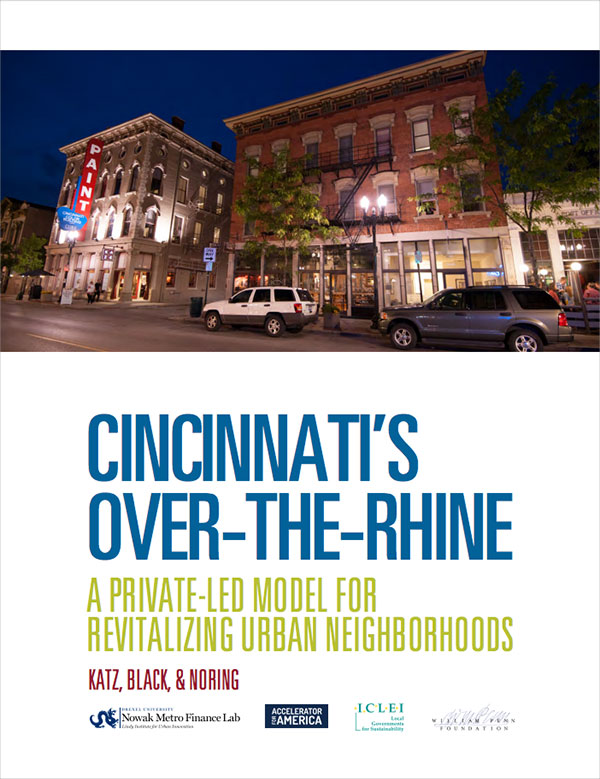Cincinnati’s Over-the-Rhine A Private-Led Model For Revitalizing Urban Neighborhoods is the first in a series from the Nowak Metro Finance Lab at Drexel University. Bruce Katz, Karen Black and Luise Noring created this City Case to share a detailed description of the turnaround of the once-blighted, downtown-adjacent Over-The-Rhine neighborhood through the City’s use of a novel governance model and strategic, patient, yet hyper-efficient financing and its impact on long-time residents. Highlights include:
- Innovative governance: Cincinnati’s decision to rely on agile private governance through a nonprofit, 3CDC, with a board of local corporate CEOs, rather than traditional planning or economic development departments, was a radical departure from conventional civic wisdom. Ensuring local corporate anchor investment gave skin in the game to companies seeking to retain talent and begin to reverse Cincinnati’s middle class losses. Concerns over a private board have been mitigated by a distributed and shared responsibility assumed by the city’s anchors with accountability built-in through the requirement of a cooperative relationship with the elected leadership of the city.
- Patient recycling of local capital: With a staff skilled in complex deal-making, raising financial capital, developing real estate, and managing assets, the corporation used public and private resources to establish at-scale land control by purchasing a critical mass of hundreds of surplus vacant properties within the targeted geography. The staff then leveraged conventional and public funding and initiate large-scale redevelopment projects through complex transactions designed to maximize the ability to recycle capital strategically as projects were completed. The City Case breaks down the capital stacks used by the corporation which we hope will spur innovative investment practices in other cities.
- Strategic, patient financing: Cincinnati financially linked the futures of downtown and Over-The-Rhine by innovative use Tax Increment Financing Districts (TIFs) that spanned both geographies so increased property values in downtown could finance improvements to OTR through a “Robin Hood effect” in a focused geography.
Additional City Cases will highlight the best structural solutions for urban transformation through the lens of inclusion, with an eye to showcase innovations that practitioners could adapt to cities with different legal systems, governance structures and economic starting points.
